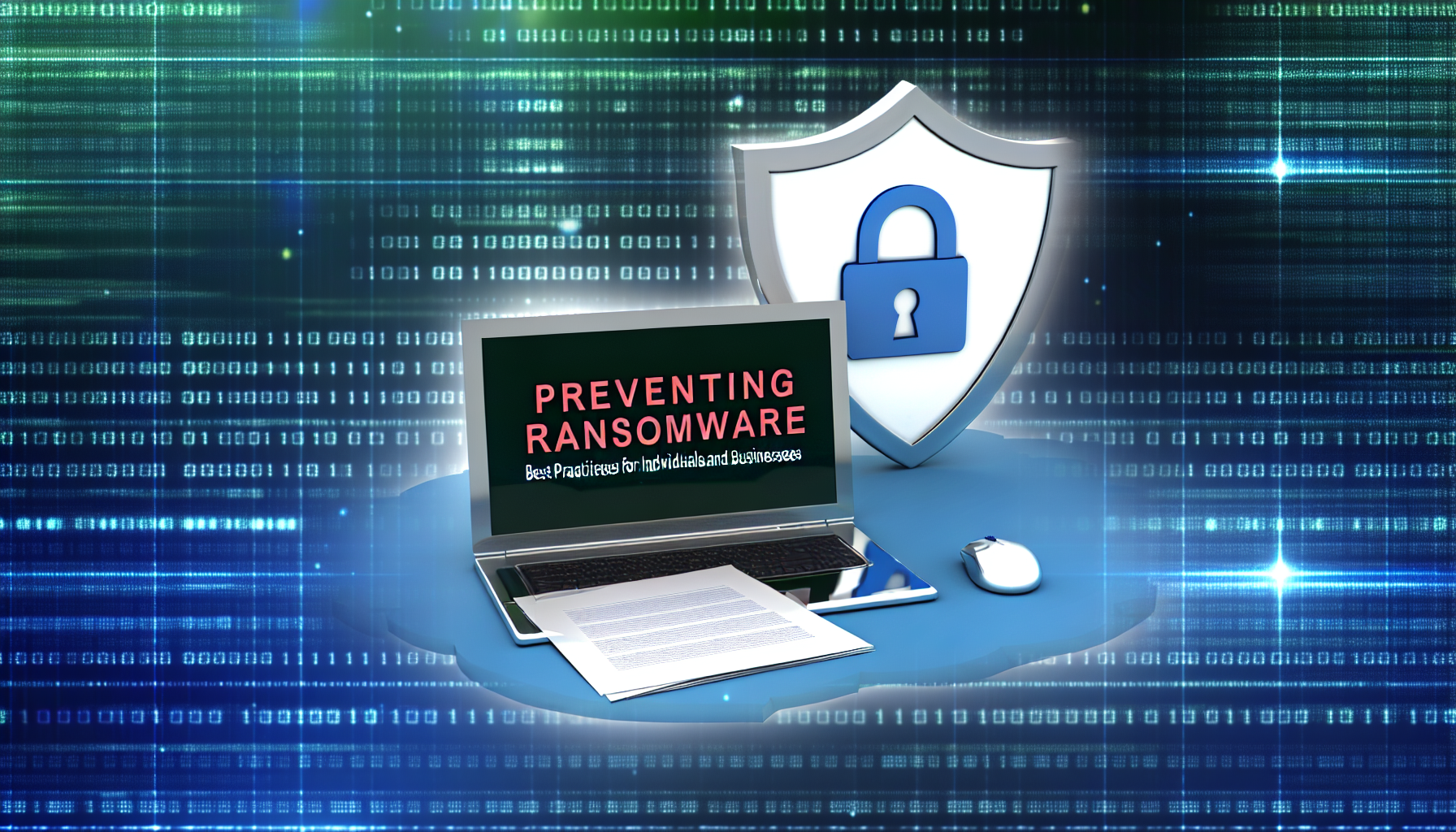Ransomware is a cybersecurity menace that has evolved into one of the most feared threats in the digital world. It can cripple individuals and businesses alike, encrypting files and demanding hefty ransoms for their release. As this malicious software continues to proliferate, understanding how to prevent ransomware attacks becomes critical. This article outlines best practices for individuals and businesses to defend against ransomware threats effectively.
Understanding Ransomware
Ransomware typically operates by infecting a computer system and encrypting files, rendering them inaccessible to users. Cybercriminals then demand a ransom, usually in cryptocurrency, for the decryption key. The potential consequences of a successful ransomware attack can be devastating, leading to loss of sensitive data, financial losses, and damage to a company’s reputation.
Ransomware Statistics
- The average ransom demanded has grown significantly over the years, with some incidents exceeding millions of dollars.
- According to cybersecurity reports, a business is attacked by ransomware every 11 seconds.
- In 2021, 1 in 5 small to medium-sized enterprises (SMEs) reported suffering from a ransomware attack at some point.
The statistics highlight the urgent need for robust preventive measures.
Best Practices for Individuals
1. Regular Backups
One of the most effective ways to protect against ransomware is through regular file backups. Keep copies of important files either in the cloud or on external hard drives that are not continuously connected to your system. This way, if your files are encrypted, you can restore them without paying a ransom.
2. Use Antivirus Software
Keep a reputable antivirus or anti-malware program installed and updated on your devices. These programs can often detect and eliminate ransomware before it can do significant damage. Regularly scan your system to catch any potential threats early.
3. Be Cautious with Email Attachments
The majority of ransomware attacks originate from email phishing scams. Always think twice before opening attachments or clicking on links in emails, especially if they come from unknown sources. Verify the sender before acting on any requests.
4. Enable Multi-Factor Authentication (MFA)
MFA adds an extra layer of security by requiring more than just a password to access your accounts. Even if your information is compromised, the additional authentication step can help deter unauthorized access.
5. Stay Informed About Threats
Educate yourself about the different types of ransomware attacks and stay up-to-date on the latest news regarding cybersecurity threats. Awareness can foster better judgment when confronted with potential threats.
Best Practices for Businesses
1. Employee Training
Invest in regular training sessions for employees on recognizing phishing attempts and other security threats. Cybersecurity awareness programs can empower staff to act responsibly and become the first line of defense against ransomware attacks.
2. Develop a Response Plan
Create a documented incident response plan that outlines the steps your organization will take in case of a ransomware attack. This plan should include contacts for cybersecurity experts, legal counsel, and communication strategies to inform stakeholders.
3. Network Segmentation
Segregating your network can limit the spread of ransomware in case of an infection. By isolating critical systems and data, you reduce the potential damage and maintain operational continuity during an attack.
4. Patch and Update Regularly
Timely updates to software and systems can close vulnerabilities that cybercriminals exploit. Set a schedule for regularly checking and applying patches to your operating systems and applications to fortify your defenses.
5. Implement Strong Access Controls
Limit user permissions based on roles and responsibilities. Ensure that employees only have access to the files and systems necessary for their job function, significantly reducing potential attack vectors.
6. Use a Firewall
Deploy a robust firewall to help block unauthorized access to your network. A good firewall will monitor incoming and outgoing network traffic and can prevent suspicious activities from penetrating your systems.
Conclusion
Ransomware is an ever-present threat, but taking proactive steps can significantly minimize the risk. By implementing best practices such as maintaining regular backups, educating staff, and using effective security measures, both individuals and businesses can protect themselves from potential attacks. The key lies in being vigilant and prepared; in doing so, you not only safeguard your data but also ensure peace of mind in an increasingly digital world.
FAQs
1. What should I do if I fall victim to ransomware?
If you’ve been infected, immediately disconnect from the internet and any network to prevent further spread. Do not pay the ransom initially; instead, seek advice from cybersecurity professionals. Often, they can help recover your data without engaging the attackers.
2. Is it safe to pay the ransom?
While paying the ransom might seem like a quick solution, it’s generally discouraged. There’s no guarantee that you will receive the decryption key, and paying can encourage further criminal activity. It’s advisable to report the incident to law enforcement.
3. Can I recover my files without paying?
In some cases, recovery tools and decryption software may be available for specific ransomware variants. Always consult cybersecurity professionals and avoid downloading unknown software, as it can worsen the situation.
4. How often should I back up my data?
It’s ideal to back up important data at least once a week or more frequently if your data changes regularly. Use a combination of local and cloud storage for more comprehensive coverage.
5. What types of businesses are most at risk?
While any organization can fall victim to ransomware, those in healthcare, education, and finance are often targeted due to the sensitivity and critical nature of their data.
By adhering to best practices and being proactive in your cybersecurity efforts, you can significantly reduce the risk of ransomware impacting you or your organization.


